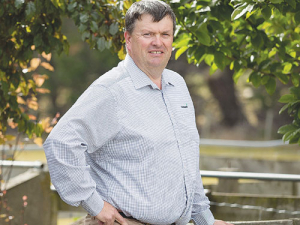MSA triumph
OPINION: Methane Science Accord, a farmer-led organisation advocating for zero tax on ruminant methane, will be quietly celebrating its first foray into fertiliser co-operative governance.
 Paul McKee says a good preventative worm programme is critical to ensure worm infections are kept under control.
Paul McKee says a good preventative worm programme is critical to ensure worm infections are kept under control.
Good Autumn growth sets the scene for maximum growth rates in beef cattle post-weaning, but beware worms in pasture, warns Paul McKee, an animal health technical manager at Ravensdown.
Left uncontrolled, seasonal worm peaks can reduce animal health and performance and rob farms of their productivity gains, McKee says. Energetic prevention is a must to keep worm infections under control.
With worms increasingly resisting drenches – especially the single active endectocides – worm control efforts must be effective and sustainable, McKee says.
Ravensdown recommends faecal egg count reduction tests (FECRTs) in which a mob is left undrenched until egg counts reach a moderate level, then divided into groups. Each group is then given different drenches and faecal samples are taken over the following 10 days to determine different treatments’ effectiveness.
Although FECRTs are considered expensive by some, the cost can be offset by drenching less often with effective combinations of drenches, McKee says.
Post-drench faecal egg counts and larval cultures will help determine if there is a need to change treatment plans.
Double or even triple combination drenches should be used if possible, he said.
“It’s harder for worms to survive triple drugs than it is to survive one drug at a time.”
However, McKee adds that it’s getting late in the season for testing drench combinations, since parasites mainly affect young stock, and testing on older stock better able to handle parasites can make an ineffective drench look better than it is.
Meanwhile, Ravensdown recommends specific management practices to help kill parasites:
• Avoid grazing young cattle intensively on short pasture with high numbers of larvae or on pasture grazed 1-2 months previously
• Use older cattle to clean up pasture where young cattle have been grazing
• Cross graze with sheep to reduce pasture larvae levels
• Lift farm fertility to grow better quality forage for stock
• Use crops and new grass paddocks to provide low larval challenges at times when larval challenge is high on established pastures
• Feed animals well to increase their ability to deal with worm challenges.
The Government is set to announce two new acts to replace the contentious Resource Management Act (RMA) with the Prime Minister hinting that consents required by farmers could reduce by 46%.
Prime Minister Christopher Luxon says withdrawing from the Paris Agreement on climate change would be “a really dumb move”.
The University of Waikato has broken ground on its new medical school building.
Undoubtedly the doyen of rural culture, always with a wry smile, our favourite ginger ninja, Te Radar, in conjunction with his wife Ruth Spencer, has recently released an enchanting, yet educational read centred around rural New Zealand in one hundred objects.
Farmers are being urged to keep on top of measures to control Cysticerus ovis - or sheep measles - following a spike in infection rates.
The avocado industry is facing an extremely challenging season with all parts of the supply chain, especially growers, being warned to prepare for any eventuality.